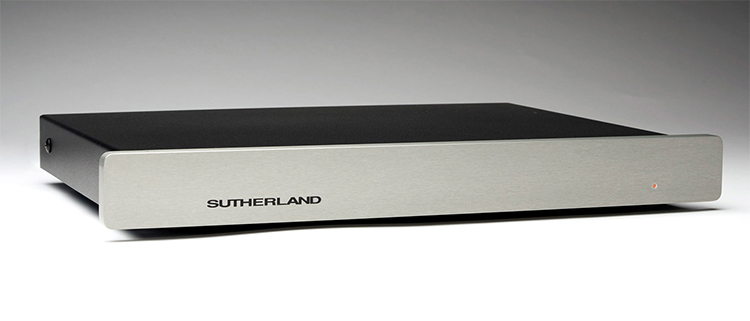
Revolutionary Transimpedance amplification for Moving Coil cartridges only.
Sounds inherently different (in a good way) from traditional phono stages. Easy on the ears.
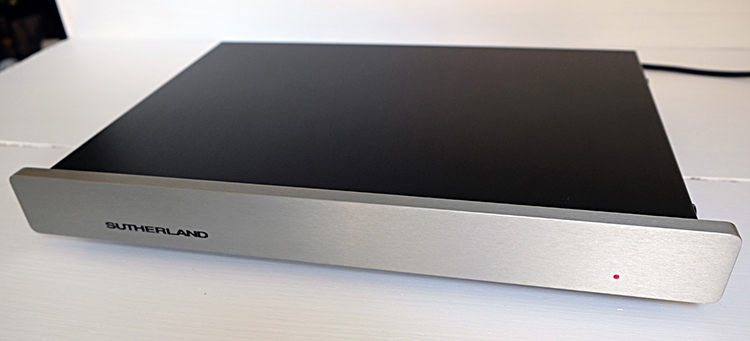
Sutherland Engineering little LOCO Phono Preamp
- Transimpedance amplification requires no loading
- Transimpedance amplification sounds great!
- Simple to connect
I’d like to say that the little LOCO from Sutherland Engineering is the first transimpedance phono stage for the masses, but at $3800 it is still not in the range that most hi-fi shoppers will be aiming for. Until they get addicted, that is. Then it might look like a bargain because the music this little guy makes is quite addictive.
Secrets Sponsor
Until recently the input stages of any phono amplifier that you could buy were either a traditional voltage to voltage amplification or transconductance which measures the voltage between the plus and minus pins of the cartridge pins (per channel) and produces a proportional current. The new flavor, transimpedance, has some distinct advantages but only if your turntable and cartridge are compatible. The advantages are so distinct that Sutherland and a few other manufactures are keen to build these phono stages even if they won’t plug into every system. Their motivation comes from the sound and I was keen to hear it.
Dimensions:
17” wide, 13 deep, 2” high
Weight:
15 lbs
Input:
RCA phono (Left and Right) + GND pin
Output:
RCA phono (Left and Right)
MSRP:
$3800
Website:
Company:
SECRETS Tags:
Sutherland Engineering, phono stage, transimpedance, current amp, phono preamp, Phono Preamp Review 2020
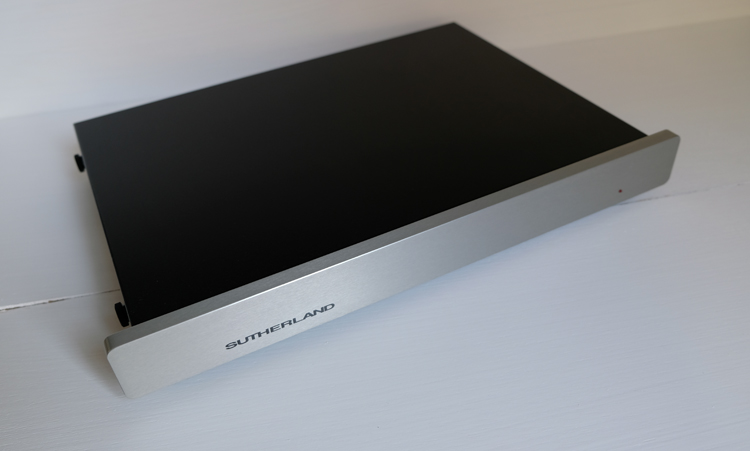
The little LOCO enjoys significant technology trickle-down from Sutherland’s first transimpedance phono stage, the PHONO LOCO ($8200). A quick perusal of the respective websites for the LOCO brothers shows that the big brother has a few more capacitors (and presumably more capacitance then). The little brother looks to have an edge in chassis design however with what you might consider an external power supply because the power supply is on the far left of the chassis, and enclosed in its own casing while the amplifiers (one per channel) are on the far right and also wrapped securely in their own shielding. The biggest difference though is the connections, the PHONO LOCO has balanced connections only, along with a stern message on the associated website saying not to bother with adapters, get your turntable rewired, or go elsewhere. I’m guessing this was written before the little LOCO came to be because it skirts this message completely with its single-ended, conventional RCA inputs.
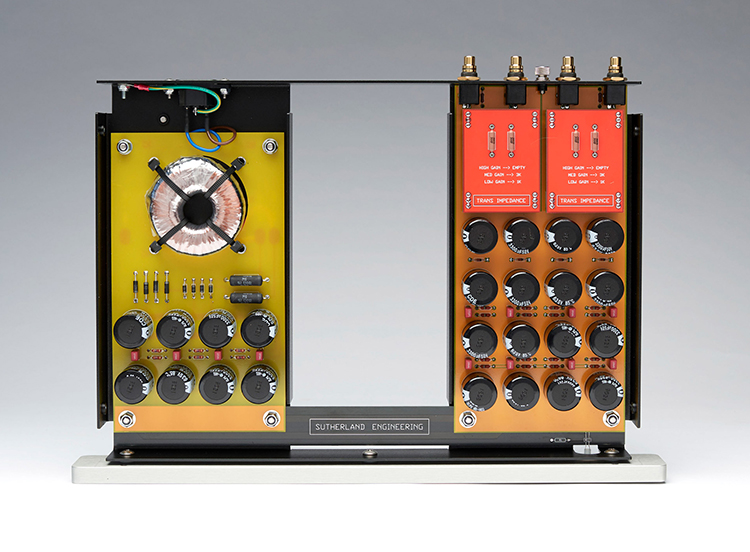
Meanwhile, the little LOCO user manual has its own warning – that you might be in the 1%, not the 1% you want to be in though – a certain small subset of turntables connect their ground wire to the shield of the RCA-phono connections. This will thwart the little LOCO by essentially removing (shunting to ground) the very current that it is looking to amplify. Rega turntables are unfortunately of this design. The tonearm can be rewired but out of the box, Rega will not work with a transimpedance phono preamp.
For once I was happy to not be in the 1%, my Nottingham Space Deck (with Dynavector XX2) cartridge mated up nicely with the little LOCO.
After reading the balanced connection-only admonition on the big brother Phono Loco though, I was a bit perplexed. The little LOCO’s inability to work with a turntable that has grounded the shield wires means that the little LOCO is finding the current-to-be-amplified flowing from the center pin of the turntable’s RCA connector to the shield-surround (outer part) of the RCA connector. How is this different, in essence, from a balanced wire from the turntable? Sure the balanced version has shielding for both of the conductors but it does seem that a conventional turntable (RCA connectors) could be adapted to work with the big brother Phono Loco.
I put the question to Ron Sutherland and indeed that is the case, the little LOCO is measuring the current from the RCA center pin to the RCA shield-surround. Moreover, it is indeed possible to connect your conventional, single-ended RCA-phono wires to the big brother Phono Loco with the use of adaptors. Better to have balanced wiring from your cartridge if possible, the shielding will protect the small signals from RF. In the case of the more common single-ended wiring, the phono cable would ideally be a twisted pair. The poor man’s way to minimize RF. I don’t think that is the case with my Nottingham and while I had no issues in playback, I did occasionally hear static being amplified through the system when I lifted a record from the platter.
Even if you are not in the 1%, there is still a chance you could be in the 0.1%. There are some moving-coil cartridges that, for whatever reason, don’t play well with a transimpedance amp. The reasons have to do not only with how the cartridge will handle the electrical load (a short between the plus and minus pins) but also how that load affects the mechanical operation of the cartridge. Indeed, the entire operation of LP playback is a delicate one no matter how you pull it off. The list of moving coil cartridges that don’t cotton to transimpedance is small and Sutherland Engineering does not yet have a list of them. It should be pointed out that even with a conventional phono stage, proper pairing with the cartridge is needed for optimal enjoyment.
The little LOCO feels quite heavy for its size. The proportions are hard to get from most photos because it is on the sleek-and low-rise end of audio componentry. I took the photo with a Stereolab LP to get a sense of the scale. The build quality is excellent as it should be at this price point.
Connection could not be easier. Inputs from your turntable and the ground wire outputs to your preamp. Add the power cord and you’re done. Did you notice what was missing there? No gain or loading adjustments required. There is a facility to change the gain by 6db in the rare circumstance that it is required, it wasn’t for me. This is a nice bonus, as I think about all the people I’ve tried to rope into an audio hobby and how confused they get about amps vs pre-amps, I know I really don’t want to explain cartridge loading to them. Problem solved.
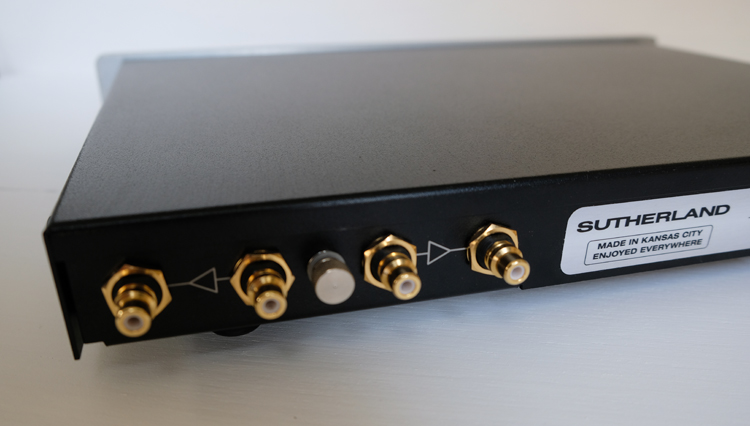
Many have described the sound of the little LOCO as ‘Easy’. Yes, effortless and easy on the ears. I had some extended listening sessions with the multitude of platters in each box of the Stereolab reissues. In fact, the little LOCO made me want to find all of the records I had for any artist I happened to play. That’s really saying something and in the case of these reissues, it is really-really saying something because each box has three long players, the last disc consisting of alternate and demo versions. Excellent track by track liner notes are included that reveal the labors-of-love and ingenuity that went into these records. This is some really tasty stuff but it can wear me out with its ongoing methodical drive. Not so with the little LOCO, the presentation is so involving, my ears and brain both wanted to experience more, well into the night, and I was happy to start with the same record the next.
I would, of course, start to crank it up after a bit of this. Then something interesting would happen, actually, it didn’t happen. Usually, when I listen to loud music my ears will start to distort a bit – as in, I hear crackly distortion. I didn’t measure the absolute decibel level when I was using the little LOCO this way but I think I was well into the realm where I would expect to get this effect. Don’t panic! This is probably not as loud as you think. When I was young I was blessed with a neighbor/friend (ahem) who liked to lob firecrackers towards others’ heads, only took one time to mess up my right ear (and to teach me to not turn my back on him.) Then there was that Who concert a few years later which probably accounts for the left ear. Anyway, as I think about this now, I wish I knew why the little LOCO would be different in this regard. At the time I was just too wrapped up in the music to think about launching a study, double-blind, or whatever. This I can tell you, play something you like through the little LOCO and you too will be wrapped up in the music.
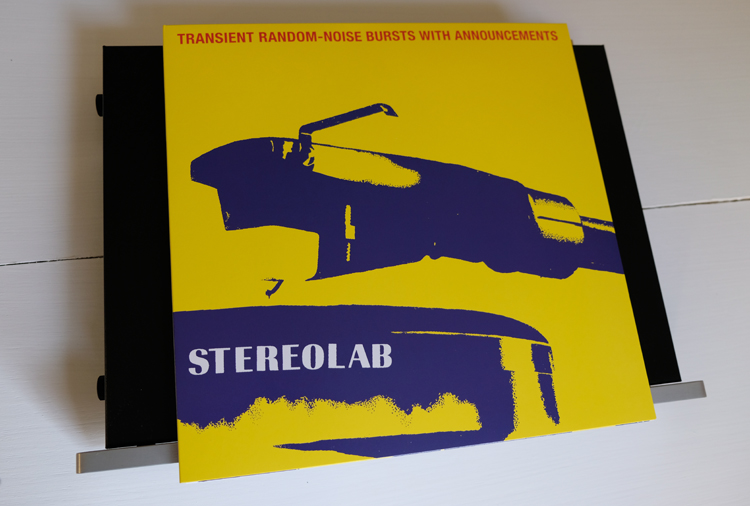
The other fascinating feature of playback from the little LOCO was the rolling sensation as one bar moved to the next. It’s hard to describe, which is why I’m going to do it anyway. It is certainly something in the realm of Pace, Rhythm, and Timing but its not your normal PRaT. Normal PRaT is what you get from fast speakers which usually equates to physically easy to move cones in the midrange (and other) drivers that aren’t constrained much by cabinet loading, driven by amplification with a high slew rate. What I was hearing from the little LOCO had a more liquid quality. It might well be that we know less about proper audio playback than we think we do. I think what I’m talking about here is an utter lack of grain. If you don’t know, grain in audio is akin to the grain in photos where for some reason, there is a distortion that sounds like what should be sweet sine waves has been broken up into little pieces and then put back together. It’s not the same as you get from digital playback (where indeed, sweet sine waves are broken up and put back together, perhaps being a little artificially sweet after such a process). Rather, it’s some artifact of amplification done badly, possibly crossover distortion. Anyway, the little LOCO lives near the far-far end of the spectrum of the quality we call grain. It’s so far to the no-grain end of the spectrum it’s like the little LOCO came from a neighboring universe where there is no grain at all. No grain in photos or in audio and none in the food supply either. The cows are 100% grass-fed, and no one has ever heard of a wheat allergy. This universe sounds pretty good.
Secrets Sponsor
I had to compare the little LOCO to the roughly three and half times more expensive Simaudio 810 that normally sits on the rack underneath that Nottingham. You could say this is hardly a fair comparison but it’s unclear who is being treated unfairly because the little LOCO is right there. I did hear more extension on either end from the Sim and the soundstage was wider, going well beyond the width of my speakers while the little LOCO would produce a bubble just as big as needed – from speaker to speaker and up to the back wall. Within that bubble, the sense of the room (where the music was recorded) and of the instruments themselves was palpable and superior to the 810. The little LOCO kept conjuring up pictures of the high-hat and snare and the pic on the guitar strings, sometimes the winding on the guitar strings. No, I was not on drugs, but the Velvet Underground were and that is where I heard/saw this the most.
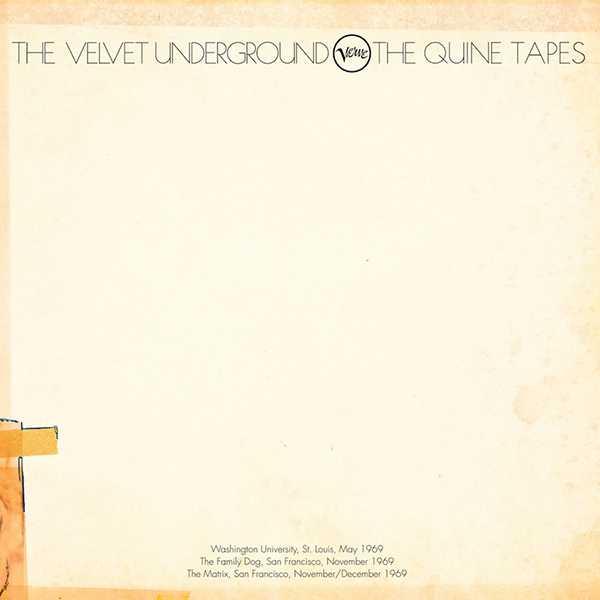
The Velvet Underground “The Quine Tapes”
I should say that the little LOCO was at a slight disadvantage in my system, I had it connected to my preamp via single-ended Nordost Blue Heavens, while the Sim gets the more expensive (and balanced) Heimdahl 2’s. That will account for some of the differences in the high and low-frequency extension that I heard. And while we’re mentioning the associated equipment: all my records are cleaned in an Audio Desk Systeme Pro Vinyl cleaner. Amplification is by Simaudio, connected by Kimber 8TC to Daedalus speakers. Interconnects are various Nordost. All power cables are Shunyata of different generations, plugged into a Furman IT-Reference 20i.
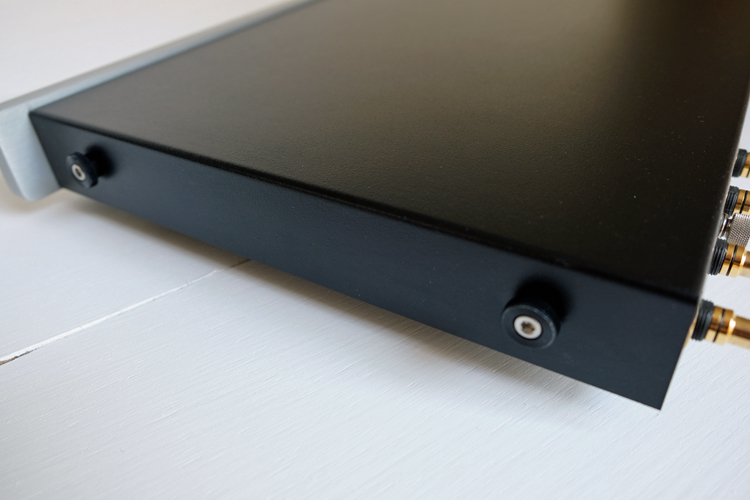
While I was talking with Mr. Sutherland about the little LOCO, he mentioned that a new flagship transimpedance phono stage is under development. This one will have both balanced and RCA inputs and an outboard power supply. Perhaps the most striking feature will be the discrete amplification/equalization stage with a 47 step Goldpoint volume control. A minimalist design for a minimal system supporting vinyl playback only. No preamp required, no facility for digital playback. Another milestone in the triumph of analog!
One final thing about talking with Mr. Sutherland. You can do that too if you wish. The telephone number for support in the owner’s manual is his cell.
THE SUTHERLAND LITTLE LOCO PHONO STAGE competes way above its price point and delivers transimpedance intrigue along with the music, it is a different experience from conventional phono stages.
- Engaging music
- ease of use
- clean styling
- Balanced outputs and an on/off switch.
- Reviewers are always plugging things in and out so sometimes we need a power switch to be sure of what we’re doing, you might not miss it at all.
I have been waiting to hear a current based phono stage for a long while now. That is why I asked for the review sample even though I knew I would be pressed to find the time to finish the review due to an impending move. If I didn’t do it, one of my fellow reviewers would, and then where would I be? Yes, I’m a bad person. But, I would do it again. The balanced connection issue was looming out there as a monstrous obstacle to the wide adoption of this technology and I congratulate Ron Sutherland for stepping up to the plate and solving the problem. The next problem to solve is on you and your audio dealer, make sure your cartridge is moving-coil and otherwise suitable for use with the little LOCO. Then, your problem will be how to afford and where to store all the records you’ll want to buy because the little LOCO is addictive.



